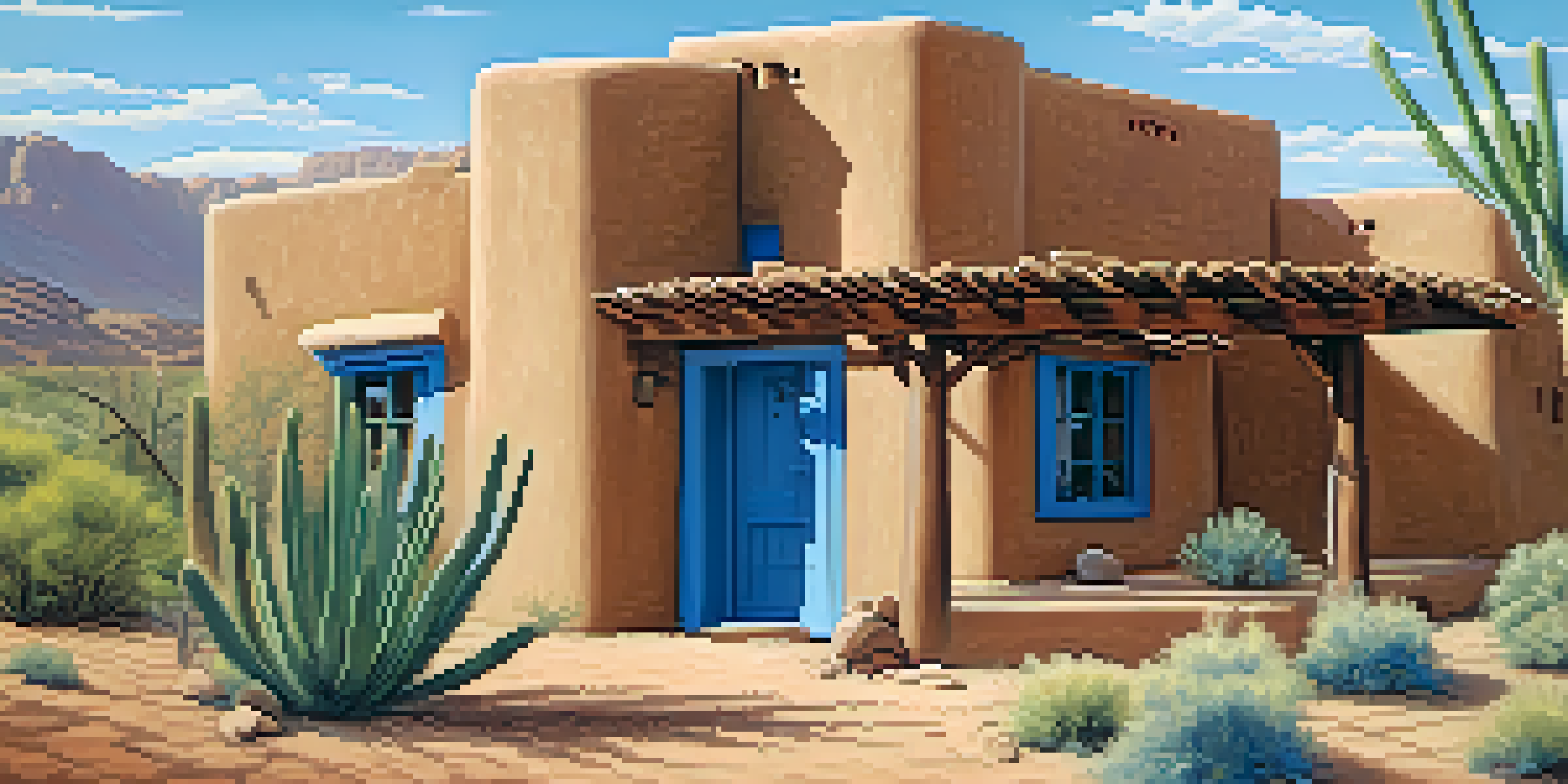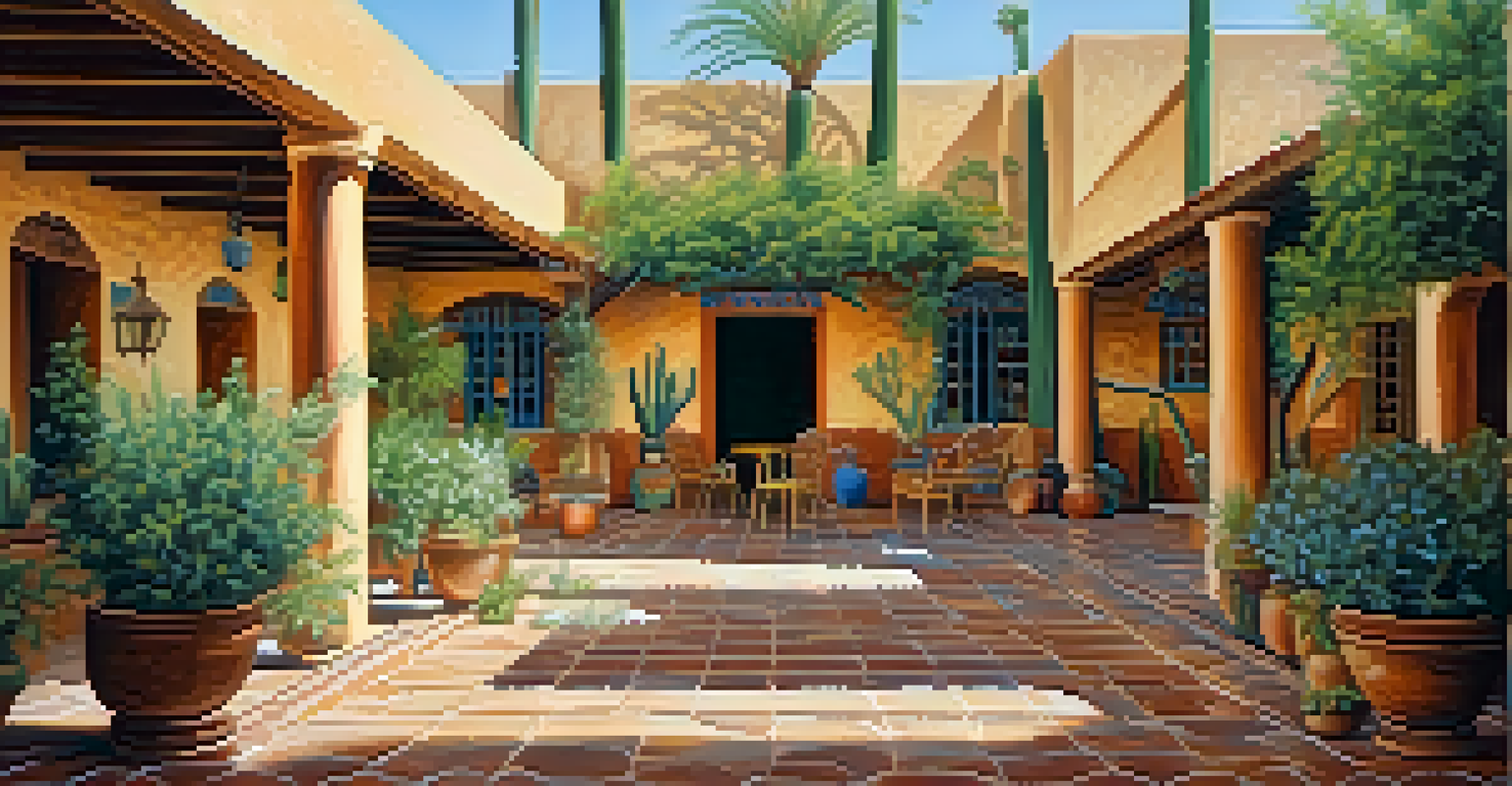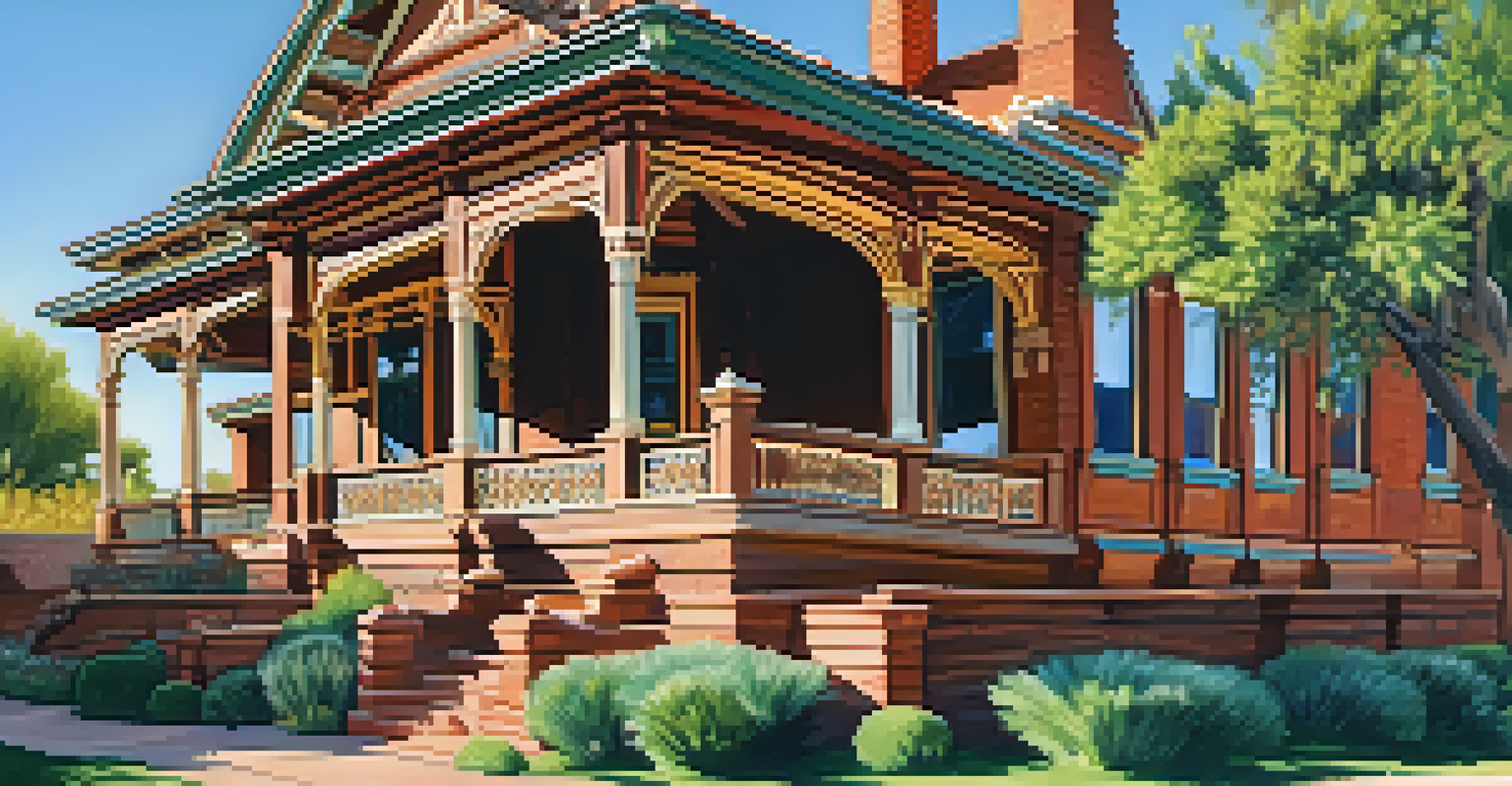Exploring the Unique Adobe Structures of Phoenix's Past

The Origins of Adobe Architecture in Phoenix
Adobe architecture has deep roots in the history of the American Southwest, particularly in Phoenix. This building technique, which uses natural materials like clay, sand, and straw, dates back to indigenous peoples who sought sustainable ways to create shelter. The use of adobe became popular among settlers in the late 19th century, as it offered excellent insulation against the harsh desert climate.
Adobe architecture is a testament to the resilience and creativity of those who built it, reflecting the rich tapestry of cultures that have shaped our cities.
As Phoenix grew, adobe structures began to symbolize a blend of cultural influences, from Native American to Spanish colonial. This unique architectural style not only catered to the practical needs of the residents but also became a canvas for artistic expression. Many early buildings showcased intricate designs and vibrant colors, reflecting the rich history of the region.
Today, these historic adobe buildings serve as a reminder of Phoenix's past and its commitment to preserving cultural heritage. As you stroll through the city, you can spot these charming structures nestled among modern developments, creating a fascinating juxtaposition of old and new.
Key Features of Adobe Structures
Adobe structures are characterized by their thick walls, which are typically made from sun-dried mud bricks. These walls not only provide durability but also excellent thermal mass, helping to regulate indoor temperatures. This means that even on scorching summer days, adobe homes remain cool, and during winter, they retain warmth, making them energy-efficient.

Another notable feature of adobe architecture is its earthy color palette, which harmonizes beautifully with the surrounding desert landscape. The use of natural materials ensures that these buildings blend seamlessly into their environment, creating a strong sense of place. Additionally, many adobe homes include traditional elements like rounded corners and wooden beams, adding to their aesthetic appeal.
Cultural Heritage of Adobe Architecture
Adobe architecture in Phoenix reflects a rich blend of Native American and Spanish colonial influences, serving as a vital part of the city's cultural identity.
Moreover, the craftsmanship in adobe construction can vary widely, showcasing local artistry and techniques. From intricate carvings to colorful tiles, each adobe structure tells a story of its maker and the cultural influences at play, making them not just homes, but works of art.
The Role of Adobe in Community Identity
Adobe buildings are more than just physical structures; they play a crucial role in shaping community identity. In Phoenix, many neighborhoods boast a rich tapestry of adobe architecture that reflects the area's history and cultural diversity. As residents gather around these iconic buildings, a sense of belonging and shared heritage is fostered.
Preserving our architectural heritage is not just about maintaining the past; it's about forging a connection with our identity and community.
Local festivals and events often celebrate the unique architectural style, highlighting its importance in the community. These gatherings provide opportunities for residents and visitors alike to learn about the history of adobe construction and its significance to Phoenix's development. Such events not only promote cultural appreciation but also encourage community pride.
Furthermore, the preservation of adobe structures enhances the city’s character and appeal to tourists. Visitors are drawn to the charming streets lined with these historic homes, eager to experience the rich culture and history embodied in the architecture. This tourism supports local businesses and fosters a vibrant economy, reinforcing the connection between adobe buildings and community well-being.
Challenges in Preserving Adobe Architecture
While adobe structures are beloved for their historical value, preserving them comes with its own set of challenges. Exposure to the elements, especially in the desert climate, can lead to deterioration over time. Rain and moisture can erode the adobe material, while intense sun can cause cracking and fading of colors, making regular maintenance essential.
Additionally, as urban development accelerates in Phoenix, many adobe buildings face the threat of demolition. The push for modern housing and commercial spaces often overlooks the cultural significance of these structures. Advocacy groups work tirelessly to raise awareness about the importance of preserving adobe architecture, but the struggle continues.
Challenges in Preservation Efforts
The preservation of adobe structures faces threats from environmental exposure and urban development, highlighting the need for ongoing advocacy and restoration initiatives.
Despite these challenges, many homeowners and organizations are committed to restoration efforts. By employing traditional techniques and materials, they ensure that these historical treasures remain part of Phoenix's landscape for future generations. This dedication to preservation highlights the community's deep-rooted respect for its architectural heritage.
Modern Adaptations of Adobe Architecture
In recent years, there has been a resurgence of interest in adobe architecture, with modern builders incorporating traditional methods into contemporary designs. This trend reflects a growing awareness of sustainable building practices and the desire to connect with the past. New constructions often feature adobe elements while integrating modern amenities, creating a unique blend of old and new.
Innovative architects are experimenting with the adobe technique, using it in creative ways that respect traditional aesthetics while meeting today’s needs. For example, some homes now have open floor plans or large windows that invite natural light, making them feel spacious and inviting. This fusion of styles allows for a fresh interpretation of adobe architecture that resonates with newer generations.
Furthermore, the use of adobe in modern building projects serves as a statement of sustainability. As environmental concerns rise, many are turning to adobe for its eco-friendly properties. This resurgence not only revitalizes the adobe style but also reinforces its relevance in today’s architectural discourse.
Exploring Notable Adobe Sites in Phoenix
Phoenix is home to several notable adobe sites that reflect the city's rich architectural heritage. One such landmark is the historic Rosson House, located in Heritage Square. This beautifully restored home showcases the elegance of Victorian-era adobe architecture and offers guided tours that delve into its history, making it a must-visit for anyone interested in Phoenix's past.
Another significant site is the Pueblo Grande Museum, which features adobe structures dating back to ancient Hohokam civilization. Here, visitors can explore the archaeological remains and learn about the indigenous cultures that shaped the region. The museum not only highlights the historical importance of adobe but also serves as an educational resource for those wishing to understand the area's heritage.
Modern Adaptations and Sustainability
Recent trends show a resurgence of interest in adobe architecture, with modern builders incorporating traditional techniques to create sustainable and energy-efficient homes.
Lastly, the Arizona State University campus includes several adobe buildings that blend seamlessly into the educational landscape. These structures are not only functional spaces for learning but also serve as a testament to the enduring nature of adobe architecture. As you explore these sites, you’ll gain a deeper appreciation for the unique charm and significance of adobe in Phoenix.
The Future of Adobe Architecture in Phoenix
Looking ahead, the future of adobe architecture in Phoenix appears promising, with a growing recognition of its cultural significance. As more people become aware of the importance of preserving historical structures, there is hope for increased advocacy and support for adobe preservation efforts. Community initiatives focused on education and restoration are helping to ensure that this architectural style remains a vital part of the city’s identity.
Moreover, the integration of adobe in modern construction is likely to continue, appealing to environmentally conscious homeowners. With an emphasis on sustainability and energy efficiency, adobe's natural properties provide a compelling alternative to conventional building materials. This shift not only honors the past but also aligns with contemporary values surrounding eco-friendly living.

As Phoenix evolves, the adobe structures that remain will serve as a bridge connecting the city’s past to its future. By embracing this unique architectural style, residents can cultivate a sense of pride in their heritage while promoting a sustainable and culturally rich environment. The journey of adobe architecture in Phoenix is far from over—it's an ongoing story waiting to be told.